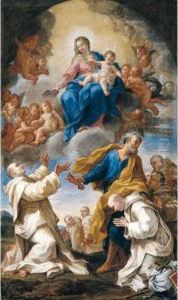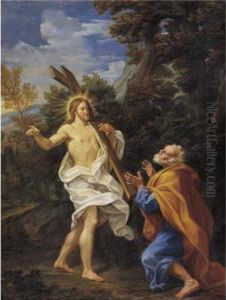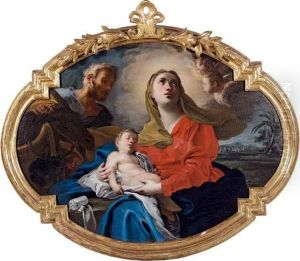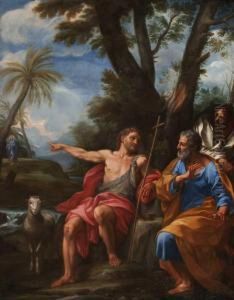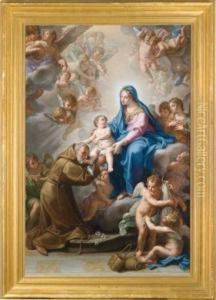Giovanni Odosi Odazzi Paintings
Giovanni Odazzi, an Italian painter of the Baroque period, was born in 1663 in Rome, Italy. He was a part of a significant era in art history, where the Baroque style was characterized by dramatic expressions, deep color, and intense light and shadow contrasts. Odazzi received his early training from his father, who was also a painter, before becoming a pupil of the prolific artist Ciro Ferri, who was a student of Pietro da Cortona, one of the leading painters of the Roman Baroque.
Odazzi's works were primarily religious in nature, reflecting the Counter-Reformation's emphasis on using art as a means for the Catholic Church to communicate its message to the faithful. His paintings often depicted scenes from the Bible, the lives of saints, and the Virgin Mary. He was known for his dynamic compositions, his ability to convey movement and emotion, and his skillful use of chiaroscuro—the technique of using strong contrasts between light and dark to achieve a sense of volume in modelling three-dimensional objects and figures.
During his career, Odazzi worked on several important commissions for churches in Rome. His notable works include the fresco of 'The Fall of the Rebel Angels' in the cupola of the Church of St. Carlo al Corso and 'The Baptism of Christ' in the church of Santa Maria degli Angeli. Aside from his frescoes, Odazzi also painted altarpieces and canvases for private clients.
Despite his contributions to the Roman Baroque, Odazzi's reputation was somewhat overshadowed by his contemporaries, such as Giovanni Battista Gaulli (Baciccio), Carlo Maratta, and Luca Giordano, who were the leading figures of the time. Nevertheless, his works can still be appreciated for their artistic qualities and as representations of the Baroque style in Rome.
Giovanni Odazzi passed away in 1731 in Rome. Although he may not be as widely recognized as some of his peers, his work remains a testament to the rich artistic culture of the Baroque period in Italy. His paintings are preserved in various churches and collections, where they continue to be studied and admired for their contributions to the era's grand narrative of art.
